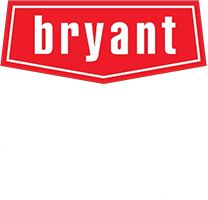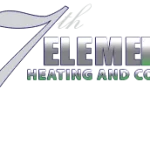Creating a Healthier Home Environment, One Breath at a Time
We spend up to 90% of our lives indoors, yet the air inside our homes can be significantly more polluted than the air outside. For health-conscious families in Nampa, creating a safe and comfortable sanctuary is a top priority. Everyday life introduces a surprising number of invisible contaminants into our air—from dust and pet dander to volatile chemicals and seasonal allergens. Especially in the Treasure Valley, factors like wildfire smoke and agricultural dust add another layer of concern. An indoor air purification system is a powerful tool to address these issues, cleaning the air your family breathes every single day.
What’s Hiding in Your Home’s Air?
You can’t always see the pollutants that compromise your home’s air quality, but their effects can be noticeable, from lingering odors to aggravated allergies. Understanding what you’re up against is the first step toward finding the right solution. Common indoor air contaminants include:
Particulates: This is the most common category and includes dust, pet dander, pollen, and microscopic debris. These particles can trigger asthma and allergy symptoms and create a constant need for dusting.
Biological Contaminants: Mold spores, bacteria, and viruses can circulate through your HVAC system, spreading illness and causing respiratory irritation. An environment with uncontrolled humidity can often worsen this problem.
Volatile Organic Compounds (VOCs): VOCs are gases emitted from common household products like cleaning supplies, air fresheners, paint, new carpets, and furniture. These chemicals can cause headaches, dizziness, and long-term health effects.
Odors and Gases: Lingering smells from cooking, pets, or tobacco smoke can get trapped indoors, making the environment feel stale and unpleasant.
Exploring Your Indoor Air Purification Options
Not all air purifiers are created equal. Modern solutions integrate directly with your home’s HVAC system to provide comprehensive, whole-home treatment. This is far more effective than small, portable units that only clean the air in a single room. Here are some of the leading technologies:
High-Efficiency Particulate Air (HEPA) Filters
HEPA filters are the gold standard for removing airborne particles. A true HEPA filter is certified to capture 99.97% of particles as small as 0.3 microns. This makes them incredibly effective against dust, pollen, pet dander, and smoke particles, providing immense relief for allergy and asthma sufferers.
UV Germicidal Lights
Installed within your ductwork, UV (ultraviolet) germicidal lights use UV-C radiation to attack the DNA of microorganisms. This technology is excellent for neutralizing bacteria, viruses, and mold spores as they pass through the HVAC system, preventing them from multiplying and circulating throughout your home.
Whole-Home Humidifiers
While not a purifier in the traditional sense, a whole-house humidifier plays a crucial role in air quality. Idaho’s dry air can cause dry skin, scratchy throats, and static electricity. It can also allow airborne viruses to travel more easily. By maintaining optimal humidity levels (between 40-60%), a ducted humidifier helps reduce the viability of certain germs and makes your home feel more comfortable.
Integrating Purification with Your HVAC System
The most effective way to improve your home’s air is with a system that works in tandem with your existing heating and cooling equipment. A whole-home solution is installed directly into your central air system, cleaning all the air that circulates through your ducts. This “out of sight, out of mind” approach ensures every room benefits from cleaner air without the noise or hassle of multiple portable units.
For these systems to work at their best, consistent care is key. Regular HVAC maintenance ensures your entire system—from the furnace to the air purifier—is functioning efficiently. During a tune-up, a technician can clean components, change filters, and inspect your air purification accessories to guarantee they are providing maximum benefit.
Did You Know? Quick Facts on Indoor Air
- According to the EPA, the air inside a typical home can be 2 to 5 times more polluted than the air outdoors.
- A single ounce of dust can contain around 40,000 dust mites, a common trigger for allergies.
- Maintaining indoor humidity between 40% and 60% may help reduce the survival of flu viruses on surfaces and in the air.
Improving Air Quality Specifically for Nampa Homes
Living in Nampa and the greater Boise area comes with unique environmental factors. During the summer and fall, smoke from regional wildfires can drift into the valley, bringing fine particulate matter that is hazardous to breathe. Our agricultural landscape also contributes seasonal dust and pollen, which easily enter our homes.
A robust, whole-home air purification system is one of the best defenses for Nampa families against these specific threats. A high-quality media filter or HEPA system can capture smoke and dust particles, while a UV light system can combat the mold spores that may appear in a tightly sealed, modern home. As a local company, 7th Element Heating and Cooling understands these challenges and provides tailored Nampa HVAC services to create a healthier indoor environment for your family.
Ready for a Healthier Home?
Discover the right indoor air purification system for your family’s needs. Let the experts at 7th Element Heating and Cooling help you breathe easier and live healthier.
Frequently Asked Questions
What’s the difference between my standard HVAC filter and an air purifier?
Your standard 1-inch HVAC filter is designed primarily to protect your equipment from large dust particles. A whole-home air purifier is a more advanced system designed to protect people by removing much smaller, health-affecting contaminants like pollen, bacteria, and smoke particles.
How often do I need to maintain my air purification system?
Maintenance depends on the type of system. Media filters typically need to be replaced every 6-12 months. UV light bulbs may need replacement every 1-2 years. It’s best to have your system inspected annually as part of your regular HVAC tune-up.
Will a whole-home air purifier increase my energy bills?
Modern air purification systems are designed for energy efficiency. While any addition to your HVAC system may use some energy, the amount is typically minimal. A cleaner system can also improve airflow, potentially increasing overall efficiency and offsetting any minor energy use.
Can an air purifier really help with wildfire smoke?
Yes. A high-efficiency media filter or HEPA filtration system is highly effective at capturing the fine particulate matter (PM2.5) that makes up wildfire smoke and poses the greatest health risk.
Do I still need to dust if I have an air purifier?
An effective air purification system will significantly reduce the amount of airborne dust, meaning you’ll likely notice less dust accumulating on surfaces. However, it won’t eliminate the need for regular cleaning entirely, as some heavier particles will still settle before they can be captured.
Glossary of Terms
HEPA: Stands for High-Efficiency Particulate Air. It is a designation for filters that can trap 99.97% of particles that are 0.3 microns in size.
VOCs: Stands for Volatile Organic Compounds. These are chemicals and gases released from various solids or liquids, such as paints, cleaning supplies, and building materials, which can have short- and long-term adverse health effects.
UVGI: Stands for Ultraviolet Germicidal Irradiation. This is a disinfection method that uses short-wavelength ultraviolet (UV-C) light to kill or inactivate microorganisms by destroying their nucleic acids and disrupting their DNA.
Micron: A unit of measurement equal to one-millionth of a meter. It’s used to measure the size of microscopic airborne particles. For reference, a human hair is about 50-70 microns in diameter.

